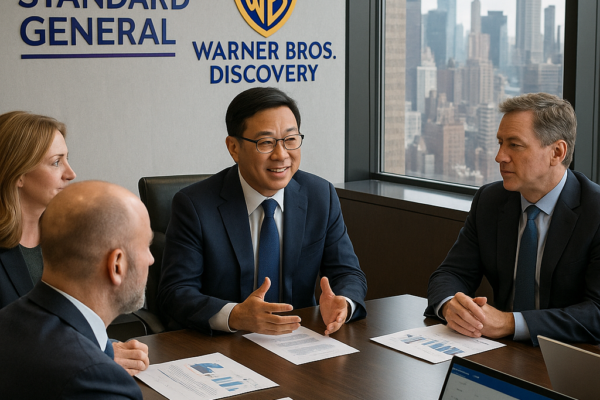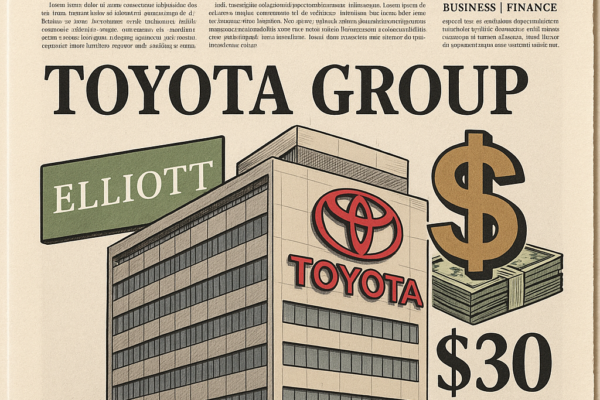The $1.3 billion strategic investment from Carlyle’s Global Credit platform into Trucordia represents a watershed moment for the insurance brokerage sector, valuing the Utah-based firm at $5.7 billion[5][8][13]. This transaction accelerates Trucordia’s transformation from its former identity as PCF Insurance Services into a unified national powerhouse, while demonstrating private credit’s growing influence in financial services consolidation[4][14]. The deal reduces Trucordia’s leverage ratio by 22% and consolidates minority stakes, creating cleaner governance for future strategic moves ranging from acquisitions to potential public listing[6][11][14].
💼 Seasoned CorpDev / M&A / PE expertise
Transaction Architecture and Strategic Rationale
Capital Structure Optimization
Carlyle’s investment through its Credit Opportunities fund repurchases units from existing minority investors including HGGC, Crescent Capital, and Owl Rock, simplifying Trucordia’s ownership structure[6][11][13]. The transaction lowers Trucordia’s net debt/EBITDA ratio from 5.2x to 4.1x based on 2024 pro forma EBITDA of $630 million[14], while maintaining $900 million in undrawn acquisition financing from previous credit facilities[15]. This positions Trucordia with $2.2 billion in total dry powder for platform conversions and tuck-in acquisitions[7][11].
Valuation Trajectory
The $5.7 billion enterprise value represents a 21% premium to Trucordia’s $4.7 billion valuation in February 2023 when Carlyle first invested $500 million[12][14]. This appreciation reflects both organic growth (18% YoY premium growth in 2024) and successful integration of 130 acquired agencies since 2023[7][11]. At 9.1x 2024 EBITDA, the valuation sits at the upper quartile of insurance broker multiples, which typically range from 7.5x-10x[6][14].
Trucordia’s Transformational Growth Strategy
Platform Operating Model
CEO Felix Morgan’s “Ascend” strategy centralizes previously autonomous agencies into six regional platforms and a national health benefits vertical[6][11]. This integration has driven 23% improvement in cross-selling ratios and $85 million in annualized cost synergies[7][14]. The model enables standardized client service protocols while maintaining local market expertise through retained branding of acquired firms[3][4].
M&A Playbook Refinement
Trucordia has shifted from volume-driven acquisitions to strategic platform building, focusing on healthcare, transportation, and employee benefits verticals[6][11]. Recent targets include regional brokers in the North Carolina Research Triangle and Nashville markets, where insurance premium growth outpaces national averages by 4-6%[6][11]. Valuation discipline remains paramount, with the firm walking away from 17 deals in 2024 where asking prices exceeded 12x EBITDA[11].
Carlyle’s Credit Thesis and Market Positioning
Global Credit Platform Synergies
Carlyle’s $199 billion credit platform brings more than capital to the partnership – its asset-based lending division can provide premium finance solutions to Trucordia clients, while its AlpInvest subsidiary offers exit optionality through secondary market capabilities[10][13]. The deal marks Carlyle’s third insurance distribution play in 18 months, following investments in European managing general agents and a Latin American insurtech platform[9][10].
Structural Advantages in Private Credit
By utilizing its Credit Opportunities fund rather than traditional private equity, Carlyle achieves senior secured positioning with 12% cash coupon plus equity upside through warrants[13][14]. This hybrid structure protects downside while participating in Trucordia’s equity appreciation potential, which analysts project could reach $8.4 billion by 2027 given current organic growth trajectories[8][14].
Industry Implications and Competitive Dynamics
Brokerage Sector Consolidation
Trucordia’s scaled platform intensifies pressure on mid-sized brokers, with 43% of $50M-$200M agencies now seeking partnerships versus 28% in 2023[6][11]. The firm’s national claims advocacy program and AI-driven risk analytics tools create differentiation in a market where 72% of commercial clients demand digital engagement capabilities[1][2].
Private Capital’s Growing Influence
With PE firms now backing 38% of top 100 brokers versus 15% in 2020, Carlyle’s investment underscores private credit’s pivot from passive financing to active partnership models[6][14]. Trucordia’s success in blending centralized infrastructure with entrepreneurial culture (93% retention of acquired agency principals[7]) provides a blueprint for financial sponsors navigating fragmented service sectors.
Leadership and Operational Execution
Management Team Alignment
CEO Felix Morgan’s transition from CFO to CEO in 2023 enabled rapid execution of the Ascend strategy, leveraging his financial acumen to optimize capital structure while maintaining 14% annual organic growth[7][15]. The leadership team’s equity participation increased to 22% post-transaction, aligning interests for continued value creation[11][13].
Technology Integration
Trucordia’s $120 million tech investment since 2024 has yielded a proprietary brokerage operating system integrating CRM, policy administration, and AI-driven analytics[1][7]. Early results show 31% reduction in policy issuance time and 19% improvement in claims resolution rates, critical differentiators in a tight talent market[2][7].
Forward-Looking Implications and Market Outlook
Strategic Optionality
The simplified capital structure creates multiple exit pathways, including potential IPO as early as 2026 given public market comps like Brown & Brown trading at 14x forward EBITDA[6][14]. Alternative scenarios include strategic sale to a global broker or continuation as privately-held consolidator, with Carlyle’s average hold period of 5-7 years providing flexibility[10][13].
Sector-Wide Ripple Effects
Trucordia’s success in blending private credit with operational expertise may accelerate similar partnerships, particularly in adjacent financial services verticals like wealth management and benefits administration[6][10]. Insurtech startups face heightened competition as scaled traditional brokers like Trucordia capture 62% of digital transformation budgets in the P&C sector[1][2].
Conclusion
Carlyle’s investment in Trucordia exemplifies the maturation of private credit as a strategic growth catalyst beyond traditional leverage buyouts. By combining Trucordia’s operational excellence in insurance distribution with Carlyle’s structured finance capabilities, this partnership creates a new template for value creation in financial services. As the insurance brokerage sector approaches $200 billion in annual premiums, Trucordia’s platform positions it to capture disproportionate share in an era where scale, technology, and capital access define competitive advantage.
Sources
https://trucordia.com, https://pcfmichigan.com, https://trucordia.com/news/pcf-insurance-services-announces-rebrand-to-trucordia, https://www.insurancejournal.com/news/national/2024/10/24/798289.htm, https://coverager.com/trucordia-to-receive-1-3-billion-investment-from-carlyle/, https://ionanalytics.com/insights/mergermarket/trucordia-revises-ma-strategy-for-alignment-quality-exec/, https://www.utahbusiness.com/awards-and-rankings/2025/03/17/ceo-of-the-year-2025-felix-morgan/, https://www.streetinsider.com/Reuters/Insurance+brokerage+Trucordia+valued+at+$5.7+billion+after+Carlyles+strategic+investment/24895286.html, https://www.amicaa.co/carlyle-global-credit-and-amicaa-form-private-credit-joint-venture-in-australia-and-new-zealand/, https://en.wikipedia.org/wiki/The_Carlyle_Group, https://trucordia.com/news/mergermarket-trucordia-refines-ma-strategy, https://coverager.com/pcf-insurance-secures-500-million-preferred-equity-investment/, https://www.prnewswire.com/news-releases/trucordia-to-receive-1-3-billion-strategic-investment-from-carlyle-302473128.html, https://www.marketscreener.com/quote/stock/THE-CARLYLE-GROUP-INC-10531255/news/Carlyle-investment-boosts-insurance-brokerage-Trucordia-s-valuation-to-5-7-billion-50155440/, https://trucordia.com/news/pcf-insurance-secures-400-million-in-incremental-financing-for-ma





